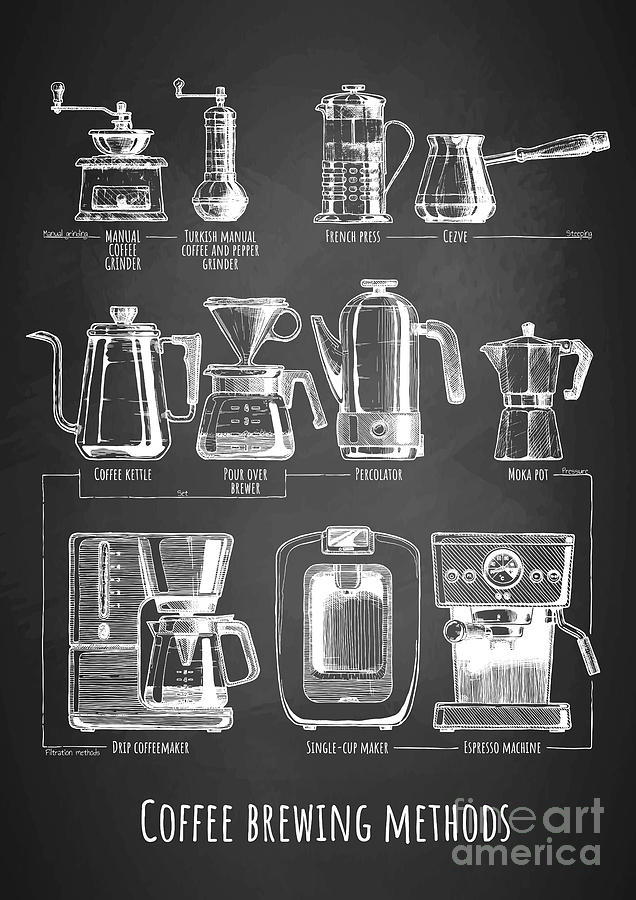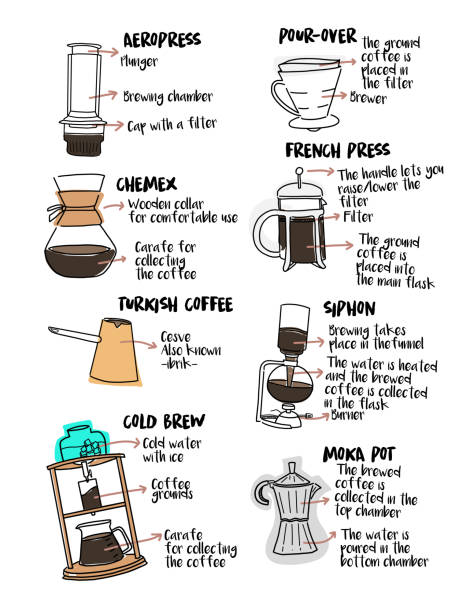The Ultimate Contrast of Popular Coffee Brewing Methods for Home Baristas
The Ultimate Contrast of Popular Coffee Brewing Methods for Home Baristas
Blog Article
The Science Behind Coffee Brewing: Exactly How Temperature and Time Affect Your Drink
Recognizing the science behind coffee developing exposes that temperature level and time are not plain variables but pivotal components that determine the drink's taste profile and total high quality. The optimal developing temperature level normally falls between 195 ° F and 205 ° F, while the duration of extraction varies significantly throughout different methods. This interplay of factors can lead to a mug that is either disappointing or delightful. As we discover the nuances of these elements, the concern arises: how can one successfully equilibrium temperature and time to attain that best brew?
The Chemistry of Coffee Removal
The chemistry of coffee extraction dives right into the detailed procedures that transform raw coffee beans right into the aromatic beverage enjoyed worldwide. This improvement mostly entails the solubility of different substances existing in the beans, which are influenced by factors such as work dimension, water quality, and the developing technique utilized.
During the developing process, hot water serves as a solvent, drawing out soluble compounds, consisting of high levels of caffeine, lipids, sugars, and acids, from the coffee grounds. Each compound adds to the flavor account, scent, and body of the last beverage. Acids are responsible for bright and tasty notes, while oils add to a rich mouthfeel.
The first stages of brewing extract acids and sugars, leading to a positive level of acidity, while extended removal can lead to anger due to over-extraction of unwanted compounds. Comprehending these chemical communications is important for enhancing brewing methods, as the balance in between extraction time and water temperature can considerably influence the overall high quality of the coffee.
Ideal Brewing Temperatures
Discovering the right developing temperature level is crucial for unlocking the complete possibility of coffee tastes and scents - coffee brewing methods. Study indicates that the optimum variety for developing coffee lies in between 195 ° F to 205 ° F(90 ° C to 96 ° C) Within this variety, the removal process effectively dissolves the preferable soluble substances in coffee beans, bring about a tasty and balanced cup
Brewing at lower temperatures, such as below 195 ° F(90 ° C ), may lead to under-extraction, generating an acidic and weak mixture with muted flavors. Conversely, brewing at temperatures surpassing 205 ° F(96 ° C) can cause over-extraction, generating a harsh and bitter taste due to the excessive dissolution of unwanted compounds, such as tannins.
Moreover, the optimal developing temperature can vary depending on the coffee bean kind and roast degree. For example, lighter roasts often profit from slightly greater temperature levels to enhance their complex flavor profiles, while darker roasts might be better matched to lower temperature levels to mitigate anger.
Ultimately, preserving accuracy in developing temperature levels is essential for achieving a harmonious balance of tastes, making sure that every cup of coffee supplies a satisfying sensory experience.
Influence of Developing Time
Developing time plays a pivotal function in figuring out the taste profile and total quality of coffee. The extraction procedure, which affects the preference, aroma, and body of the drink, is greatly depending on how much time the coffee grounds are in call with water. Much shorter developing times can result in under-extraction, leading to a weak or sour flavor, as not adequate soluble compounds are dissolved. Conversely, prolonged developing can bring about over-extraction, where unwanted compounds are released, resulting in an astringent or bitter preference.
Ideal brewing time differs depending on the method utilized and the grind dimension of the coffee. As an example, a French press typically needs about 4 mins, while espresso removal is typically completed within 25 to 30 seconds. It is important to calibrate brewing time in combination with various other variables, such as water temperature and coffee-to-water ratio, to attain the wanted taste account.
Understanding the effect of brewing time makes it possible for coffee fanatics to improve their developing methods, inevitably boosting the sensory experience of their mug (coffee brewing methods). With careful interest to this variable, one can unlock the complete potential of the coffee, disclosing its one-of-a-kind attributes and nuances
Brewing Approaches and Their Results

For example, techniques like French press and cool brew permit a much longer steeping time, causing a fuller body and durable flavor because of increased removal of oils and soluble solids. Alternatively, espresso brewing utilizes high pressure and a shorter extraction time, producing a focused shot that emphasizes extreme flavors and a rich crema.
Pour-over techniques, such as Chemex or V60, provide an even more controlled removal procedure, permitting the maker to control flow rate and water distribution, which can improve illumination and clearness. Percolation techniques cycle water with the coffee grounds multiple times, leading to a stronger, usually bitter flavor.
Finally, using go to website paper filters versus steel filters can additionally influence the last preference; paper filters generally generate a cleaner mug by trapping oils and great fragments, while steel filters enable even more oils to go through, adding to a fuller mouthfeel - coffee brewing methods. Understanding these subtleties can raise the coffee experience considerably
Tips for Developing Your Mixture
A well-executed mixture can change even the easiest coffee right into a remarkable experience. Grind the beans just before brewing to maximize quality, making sure the grind dimension matches your developing technique-- coarser for French press and finer for espresso.
Water quality plays an important function; use filtered water without pollutants. The suitable developing temperature level varies in between 195 ° F and 205 Recommended Site ° F(90 ° C to 96 ° C ) As well hot can burn the coffee, while also cool might under-extract flavors.
Timing is just as important. For immersion techniques, soaking for 3 to 5 minutes is ideal, whereas drip approaches typically take around 5 minutes. Try out brew times to find your preferred strength.

Verdict
In recap, the intricate partnership in between temperature level and time is paramount in the coffee developing process. Abiding by ideal developing temperatures between 195 ° F and 205 ° F, alongside exact timing tailored per approach, guarantees the desired taste account is accomplished. Comprehending these clinical concepts encourages individuals to fine-tune their developing methods, eventually causing an extra well balanced and satisfying coffee experience. Mastery of these factors is crucial for any kind of coffee lover looking for quality in their drink.
Recognizing the science behind coffee brewing exposes that temperature and time are not plain variables yet critical components that determine the beverage's flavor account and general quality. Understanding these chemical interactions is crucial for maximizing developing strategies, as the balance between extraction time and water temperature can significantly influence the general top quality of the coffee.Brewing time plays an essential Read Full Article function in establishing the flavor account and total high quality of coffee. By focusing on these aspects-- bean top quality, grind size, water temperature, steeping time, and ratio-- you can raise your coffee developing procedure, resulting in a continually superior mug.
In recap, the intricate connection between temperature level and time is critical in the coffee brewing procedure.
Report this page